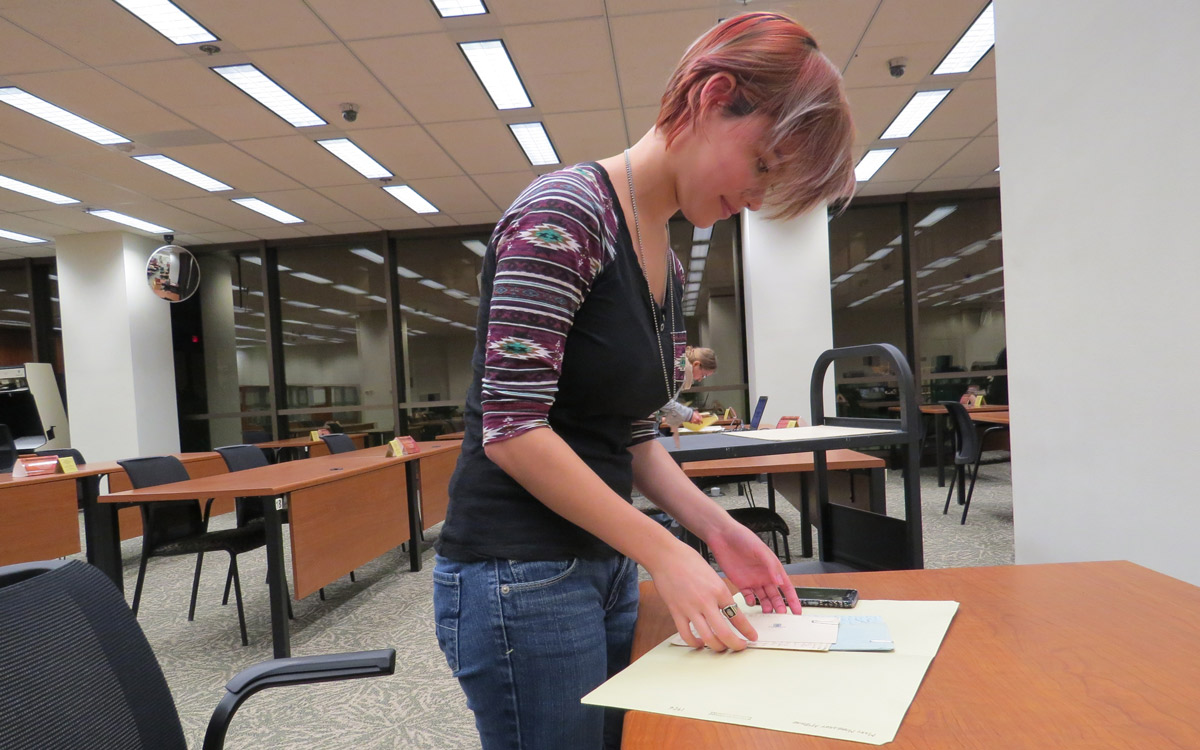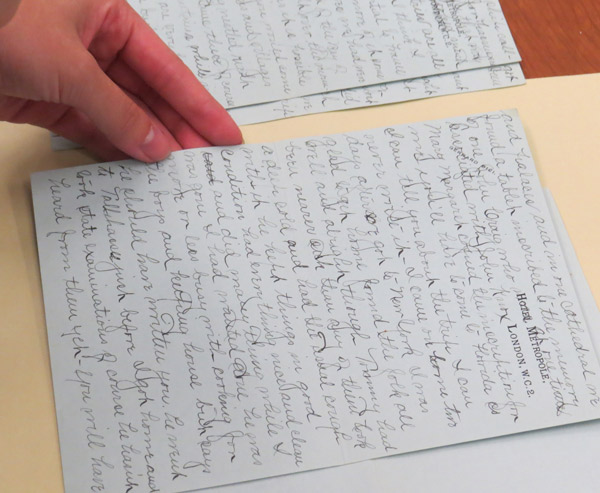

Catholic University’s location in Washington, D.C., provides its students with many unique opportunities to apply the skills they learn in the classroom to the real world. In MDIA 417: Researching Media History at the Library of Congress, Assistant Professor Josh Shepperd works with the Library of Congress to teach his students how to use primary source material in the study of media.
“I believe in experiential learning. I want my students to study the concepts that underlie the practices in the study of media. I want them to go out and see the resources that D.C. provides and experience all of the organizations that D.C. has to offer,” says Shepperd who teaches in the Department of Media and Communication Studies.
As the 2017 Sound History Fellow and director of the Library of Congress’s Radio Preservation Task Force, Shepperd was able to arrange access for his students to utilize Library of Congress resources, such as the Performing Arts, Manuscript, and Moving Image reading rooms. Once a week the LOC keeps a reading room open after hours so they can conduct readings of contemporary scholarship.
The course is structured around students researching and writing an original paper on a person or event that was key to American media. Grace Woo is a senior English major and media studies minor who chose the life of American radio personality Mary Margaret McBride for her paper.
“I wanted to do research on a woman in the industry who had not had as much attention as other famous people in radio,” says Woo.
The Library of Congress allows students to access primary source documents such as personal correspondence of historic figures as well as media traces found in film, television, radio, and photographic records.

“It’s incredible to see and hold documents that she held in her hands and see letters in her hand writing that I knew she wrote,” says Woo. “It makes her seem like much more of a real person and less of a person in a textbook.”
Along with primary source documents related to their research papers, the students have had the chance to see important pieces of American history as well.
“The students have been able to see some really cool stuff,” says Shepperd. “Last week they saw the original [hand-typed copyright copy of Martin Luther King Jr.’s] ‘I Have a Dream Speech.’ A few weeks before they saw the original drawing that Alexander Graham Bell made to visualize the telephone, as well as the original Western Union telegram to Washington declaring that Pearl Harbor had been bombed.”
Seeing these key historical documents has given the students a new perspective on the history they are learning in the classroom.
“It’s a fantastic resource that I am lucky to be able to utilize,” says Woo. “It allows me to do research that I wouldn’t be able to do otherwise because there aren’t that many resources on Mary Margaret McBride outside of the Library of Congress.”